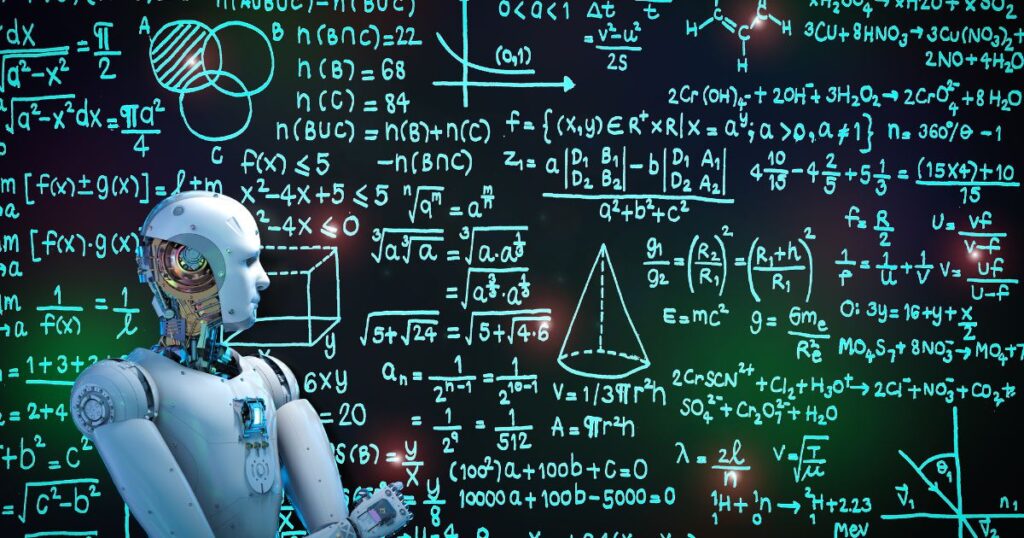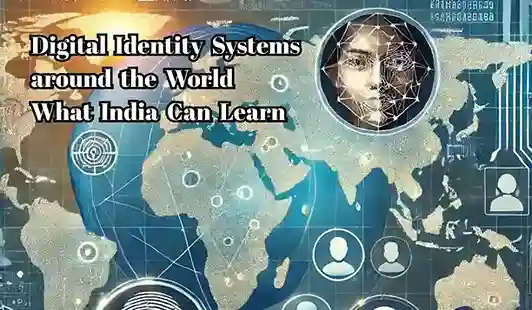AI is no longer the future but the revolutionary force driving change in many sectors in the present. From our mobile phones to checkout-free grocery shopping and social media to automobiles, AI has announced its arrival stylishly – it is here to slay and, of course, stay.
AI is redefining many fields today, and education is one of them. It has a massive potential to tackle some of the biggest educational challenges – personalized guidance, time-consuming administrative tasks, and innovative learning practices. Imagine sitting in a classroom and getting your assignments, like quizzes, graded immediately. That is the power of AI.
In this blog, we will explore the impact of AI on students’ learning experiences and how AI is making education more personalized, accessible, and efficient. From adaptive learning platforms to virtual tutors – the opportunities presented by AI are immense and profound.
What is AI in Education?
How about a classroom where each lesson is custom-designed for every student, administrative work is automated, and instructors have real-time data to help students succeed? This is not a distant dream but the reality AI is bringing to education. AI in education uses machine learning, natural language processing, and data analytics to make learning smarter and more effective.
AI is changing the face of education. When designing courses, AI tools filter through a lot of data to produce adaptive lesson plans for students from different learning paths. Personalized learning platforms use AI algorithms to measure student performance and tailor content for specific learners. Even behind the scenes, AI is automating administrative functions such as grading, scheduling, and student achievement tracking so teachers can teach and mentor students.
There is so much that AI can do to make teaching and learning more enjoyable. It gives educators the power of data-driven decisions and lets students learn independently. Whether it’s a computer-based tutor to help a troubled student or an AI-powered aid providing material for students with disabilities, AI is paving the way for a more inclusive and effective education system.
How Can AI be Used in Education?
Personalized Learning
Artificial intelligence-powered adaptive learning platforms are changing how students receive education. These platforms use algorithms to detect a student’s performance, learning pace, and interests to provide an individualized learning platform. Khan Academy and DreamBox, for example, modify lesson difficulty continuously so students are neither overwhelmed nor under-challenged. One student who needs more practice and video tutorials on fractions may get additional practice. In contrast, students who have mastered the same subject may move on to advanced material sooner.
The advantages of personalized learning pathways are immense. Students can focus on areas where they need the most help, maximizing their understanding and retention. Not only does this help academically, but it also creates self-esteem as the students learn according to their rhythm.
Accessibility and Inclusivity
AI is taking education one step further by making learning accessible for everyone. Technology such as text-to-speech and speech-to-text allows students with vision or hearing impairment to navigate their way through the curriculum. Moreover, AI-based real-time translators allow bilingual students to interact in the same classroom.
AI eliminates barriers to learning in rural or underserved regions by presenting high-quality materials on mobile phones and low-data platforms. Microsoft’s Immersive Reader, for instance, can make reading more accessible for dyslexic students, and online tutoring services don’t let anyone get left behind because of location or limitations.
Enhanced Student Engagement
AI-based applications are turning education into an interactive journey. Gamification platforms like Kahoot! teach with AI, using quizzes and games to reinforce lessons. Virtual tutors and chatbots give students feedback and guidance in real-time so that they stay on track.
These technologies keep students engaged so that learning is not a chore but an exciting journey. AI is reshaping the relationship between students and learning and making passive learning exciting and interactive.
Benefits of AI in Education
AI is changing the teaching process by automating some of the most time-intensive processes so that teachers can spend their time on what really matters — teaching and motivating students. AI tools save time and effort, whether automatic grade marking, attendance tracking, schedule maintenance, or other mundane operations. For example, AI grading systems can grade multiple choice, short answer, and even essay tests with precision and efficiency.
Beyond automation, AI gives teachers real-time data-based insight into students’ performance and classroom trends. It identifies learning deficiencies, evaluates progress, and flags improvement areas so the teacher can act decisively. This allows for more targeted teaching strategies tailored to the needs of each class or student.
Above all, with less administrative work, teachers have more time to coach, be creative, and engage in difficult problem-solving exercises. AI also empowers them to customize the lessons, forge meaningful relationships with students, and create fresh ways to teach, making teaching more effective and profoundly impactful.
Challenges and Ethical Considerations
There are several problems and moral issues with using AI in education. Data privacy and security are necessary, as obtaining and storing student data is open to leakage and abuse. Compliance with data protection laws such as FERPA and GDPR is important to protect personal data.
Bias in AI algorithms can perpetuate existing inequalities, leading to unfair outcomes in educational tools. Transparent, inclusive AI design should also be a top priority to reduce bias and ensure equitable education.
There are also teacher and student adaptation issues because teachers might need to be trained to use AI software, and reliance on technology might undermine critical thinking and problem-solving. All of this must be considered before AI in education is implemented successfully.
Effectiveness of AI Detectors in Education
AI detectors help ensure the integrity of an academic text by detecting plagiarism and AI content in student writing. Such services use sophisticated algorithms to scan text patterns and flag errors that might indicate copied or AI content. They’re best used in the classroom to help spread honesty, creativity, and a sense of reason. But they’re not perfect: false positives and failure to detect fine details can sometimes be problematic. Detectors should keep up with AI, but they also should continue to be reliable and equitable tools for teachers to foster an ethical learning environment and encourage students to generate work of substance.
Pros and Cons of AI in Education
Advantages of AI in Education
- Increased efficiency
- Personalized learning
- Data-driven insights
- Enhanced engagement
- Accessibility
- Scalability
Disadvantages of AI in Education
- Data privacy concerns
- Bias in algorithms
- Over-reliance on technology
- Cost implications
- Resistance to change
- Job displacement
Wrapping Up
AI is about to change education by reimagining learning for the student and the teacher. Learning pathways can be customized, accessibility can be improved, and administrative workflows can become more efficient with AI helping to design more meaningful and effective learning spaces.
But if we take advantage of these innovations, we must keep up with the associated risks — data privacy and algorithmic bias. How to use AI’s strengths while maintaining a moral focus is going to be the issue when developing an education system that is not only fresh but equitable and inclusive. We can look forward, together with technology and education, to a future where every child can thrive.



